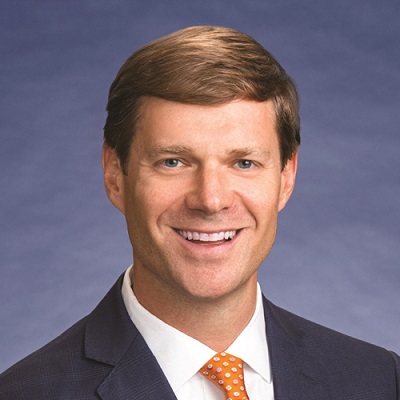Privately backed operators are such a force in the U.S. oil and gas business that trends within that space can foreshadow developments ahead for the entire industry. And with more than three decades as a lead investor in many of the ventures that have made it happen, EnCap Investments’ portfolio features a veritable “who’s who” of success stories.

“At the end of the day, we think it’s a strong investment environment, and capital is going to need to flow back to the E&P sector.” Brad Thielemann, EnCap Investments
With almost 20 years at EnCap, partner Brad Thielemann has insight into the road ahead.
Thielemann recently spoke with Hart Energy’s Deon Daugherty, Oil and Gas Investor’s editor-in-chief, about private equity’s evolving role and just how much the story may remain the same.
Deon Daugherty: Much like the “cyclical” nature of the energy industry itself, private equity has its own rhythm. The “buy and flip” model has shifted now to more of a “hold and develop” strategy; what does that tell us about the trajectory?
Brad Thielemann: The one thing about private equity that really hasn’t changed is that the structure allows us and our teams to make quick decisions and to be nimble from an economic standpoint as the market changes.
Private companies are running over half of the rigs in the U.S today. The role of private companies and private equity is as important as it’s ever been. We’re running around 30 rigs in our portfolio at EnCap, making us one of the more active operators on an aggregate basis.
The model of how we capture and then develop assets has changed. The “buy and flip” model in the upstream space made sense when the market rewarded resource expansion, and buyers were willing to pay for opportunity sets heavily weighted to upside potential. The market has obviously evolved dramatically over the past few years.
As the market shifted, our investment strategy and business plans did as well. We’re generally developing assets longer. We’re trying to build businesses that have scale, free cash flow and quality inventory. But some things haven’t changed—backing the best people and trying to find opportunities that generate the best risk-adjusted returns. We believe we can generate attractive returns through large-scale, economic development programs and create assets that today’s buyers are seeking. We think the private equity survivors, as we call them, are going to see good opportunities for many years to come, particularly for those that can buy and operate at scale.
DD: Undercapitalization within the traditional energy space is an ongoing theme, but we’re also seeing some concern lately about lacking investment within the transition resources space. How might private equity fit in meeting those demands?
BT: As we step back and look at the opportunities that are in the transition, a massive amount of capital is going to be required over decades. Private equity may be just a piece of that, but we do see significant opportunity.
We partnered with a dedicated investment team back in 2019 that had extensive experience in the space and was exclusively focused on opportunities in energy transition. They have built an exciting portfolio and backlog of opportunities today. We thought it was critical to partner with individuals who had spent the vast majority of their careers in energy transition, and we’ve seen the benefits of their expertise and relationships to attract strong management teams, generate deal flow and navigate what is an exceptionally dynamic and growing market.
DD: When it comes to meeting global demand, there are dozens of estimates for just how much energy investment is needed—and profoundly lacking—particularly in traditional energy. Why do you think these disparities persist?
BT: We do think the underinvestment in the traditional part of the energy business is real. Just looking at historical upstream investment, there was a period of massive capital spend at the turn of the last decade with high commodity prices and easy access to capital. A few years ago, we saw investment slow and the narrative shift to capital discipline. There is now a big shortfall in upstream spending worldwide, with projections showing we need to spend almost 50% more than we are currently spending to meet demand over the next decade. So there’s a big shortfall, and it’s going to create some macro challenges, as well as opportunities, going forward.
During the U.S. shale boom, there was a ‘growth at all costs’ mindset and access to public and private capital was easy to come by. In a lot of cases, capital was poorly allocated and returns were bad, and there is still scar tissue for certain investors despite the fact that energy has been one of the best-performing sectors the last two-plus years. ESG concerns are another hurdle and some investors will never support hydrocarbons again even though affordable, reliable energy is critical and beneficial for the world. With everything happening over the last year with Russia and Ukraine, the conversation has shifted some, but there is still a lot of capital that hasn’t flowed back into the system.
From a private equity standpoint, many of the large traditional or generalist firms have exited our space. Even though private equity is a relatively small piece of the puzzle, the contraction of that capital has implications for our industry. For those with access to significant capital today, there are some really good risk-adjusted opportunities.
At the end of the day, we think it’s a strong investment environment, and capital is going to need to flow back to the E&P sector. Hopefully, strong returns will be hard to ignore and some capital will flow back to the space, but it probably won’t compare to what we saw in prior decades.
DD: What does the global emphasis on energy transition mean for longtime private equity players like EnCap that have largely led the placement of private funding for traditional oil and gas?
BT: It’s a good question. We’re big believers that we’re going to need an “all of the above” approach to meet growing energy demand and that the energy transition will take a very long time. But oil and gas is critical and will remain the backbone of the global economy for decades.
All we do at EnCap is energy. We are in a dynamic and important industry, and we’ve seen a lot of change in our space in the last 30-plus years. We know change will continue and that oil and gas will remain important, and that we’ll continue to try to find great opportunities in this long transition.
DD: Have these dynamics changed your strategy in the sense of actual locations or parts of the world in which EnCap wants to invest?
BT: Economics are going to drive all of our investment decisions on where to invest. Substantially all of our recent capital has been deployed in the Lower 48. This is driven by our view of risk-adjusted economics, as well as where we have our relationships and what we view as our strengths as a firm. We still see great opportunity in the U.S., and I don’t expect that to change soon.
We’re currently invested in almost every major onshore U.S. basin—the Permian is a major focus, but we have teams in Appalachia, the Bakken, the Eagle Ford, the Haynesville, the Midcontinent, the San Juan and the Uinta. We have actually done three large acquisitions in the last two years, and all of those were outside of the Permian. About half of our approximately 30 rigs are running the Permian, but the rest are spread out across those other basins where we like the development economics. In general, we’ve found that partnering with the right teams on the right assets is a great equation to create value and be successful.
Recommended Reading
TPG Adds Lebovitz as Head of Infrastructure for Climate Investing Platform
2024-02-07 - TPG Rise Climate was launched in 2021 to make investments across asset classes in climate solutions globally.
JMR Services, A-Plus P&A to Merge Companies
2024-03-05 - The combined organization will operate under JMR Services and aims to become the largest pure-play plug and abandonment company in the nation.
Chord Energy Updates Executive Leadership Team
2024-03-07 - Chord Energy announced Michael Lou, Shannon Kinney and Richard Robuck have all been promoted to executive vice president, among other positions.
First Solar’s 14 GW of Operational Capacity to Support 30,000 Jobs by 2026
2024-02-26 - First Solar commissioned a study to analyze the economic impact of its vertically integrated solar manufacturing value chain.
SunPower Begins Search for New CEO
2024-02-27 - Former CEO Peter Faricy departed SunPower Corp. on Feb. 26, according to the company.





